Description
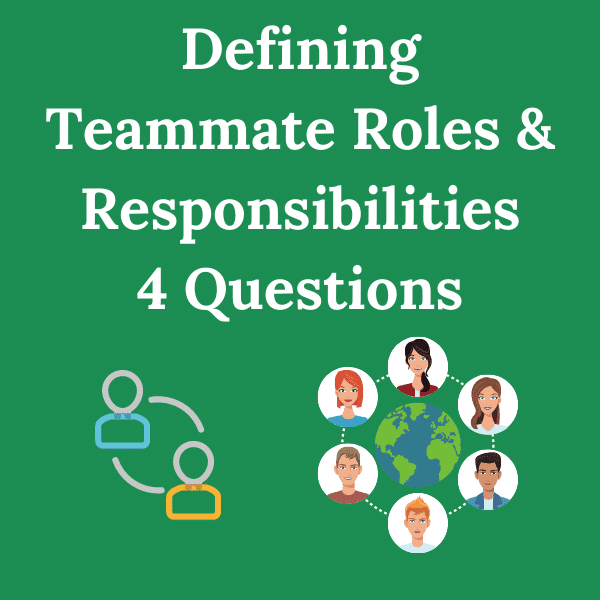 Defining teammate roles and responsibilities exercise, using these four questions, will increase the likelihood your team will achieve 100% customer satisfactionCreating 100% customer satisfaction is a primary goal of Right-Minded Teamwork. More.
Defining teammate roles and responsibilities exercise, using these four questions, will increase the likelihood your team will achieve 100% customer satisfactionCreating 100% customer satisfaction is a primary goal of Right-Minded Teamwork. More.
So many teams go off the rails because they don’t know how to define and clarify teammate roles and responsibilities, or they simply don’t take the time to make them clear.
Certainly, it doesn’t have to be that way.
Clarifying teammate roles is a sure way to sustain high-performance teamwork, and this 4-question roles and responsibilities workshop is faster and better than creating a RACI Chart.
Similarly, as preventive maintenance ensures your car runs properly, conducting a periodic team-building workshop to re-clarify teammate roles and responsibilities will do the same for your team.
Why Clarify Teammate Roles?

As a result, their timing is off; they burn oil and blow smoke.
And who needs that kind of poor teamwork behavior — especially when it’s easily prevented with this teammate role and responsibility exercise?
Pros & Cons of a RACI
One of the standard ways to clarify roles is to create a RACI chart. This team-building exercise defines individual or group Roles and Accountabilities as well as who needs to be Consulted and Informed.
Pros: This is an excellent and comprehensive process. Any team that creates even moderately thorough RACI will benefit from the discussion that took to make it and especially when teammates adhere to it.
Cons: For many teammates, creating a RACI chart takes too long. Also, it’s useless if the team doesn’t periodically review it.
If you don’t have a lot of time, use these four questions because it’s far better to prevent teammates from getting cranky.
The Four Questions
Defining Teammate Roles and Responsibilities Using These Four Questions.
First, these questions are openly discussed in a team-building workshop.
Second, you want to give teammates about two weeks to prepare.
Finally, the product of the workshop will be a clear understanding and, in many cases, new teammate Work Agreements.
1. What are your 2-3 key deliverables, objectives, or products you produce for the team?
2. What resources or support do you need that you are currently receiving?
3. What resources or support do you need that you are NOT receiving now?
4. What are you getting that you DON’T need; what is preventing or getting in your way of doing your job?
Download this Guide for step-by-step instructions on how to set up and facilitate a role clarification team-building workshop.
Bonus: 5 Additional Questions for Defining Roles and Responsibilities
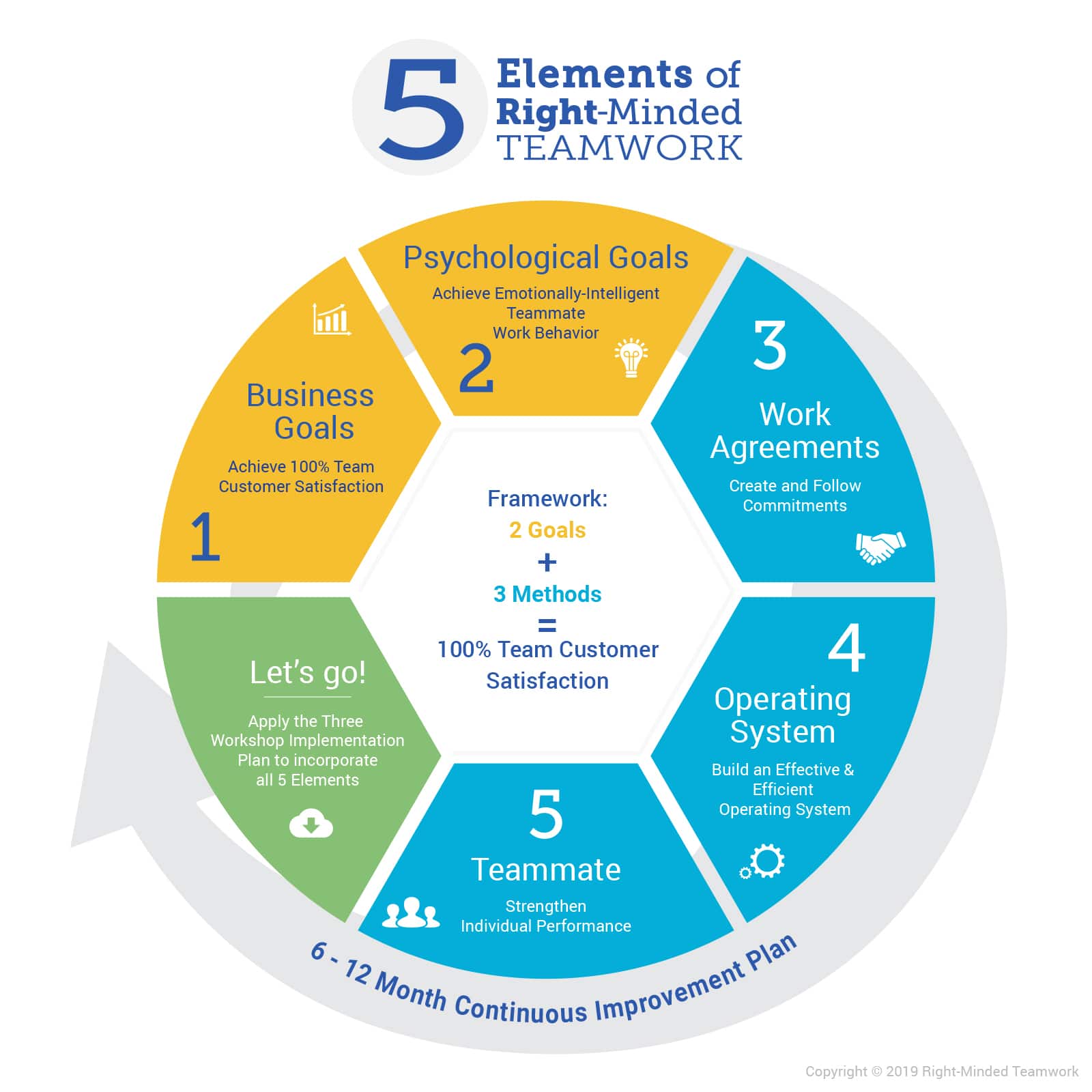
In other words, each teammate produces a short answer to each of these five questions that align with the five elements.
- What are the specific roles or responsibilities you have that ensure your team achieves 100% customer satisfaction?
- What tasks do you perform that help the team achieve its values, which are mostly your team’s psychological goalsA team’s psychological goals describe how teammates intentionally choose to think and behave as they work together to achieve their team’s business goals. More?
- What behaviors are you demonstrating that show you are living the spirit and letter of your team’s work agreementsA Work Agreement is a collective teammate promise to transform non-productive, adversarial behavior into collaborative teamwork behavior. More?
- What responsibilities are you consistently demonstrating that ensure your team’s operating system runs smoothly and efficiently?
- What specifically are you doing to nurture your right-minded teammate attitude and performance?
But wait. You Have One More Teammate Role.
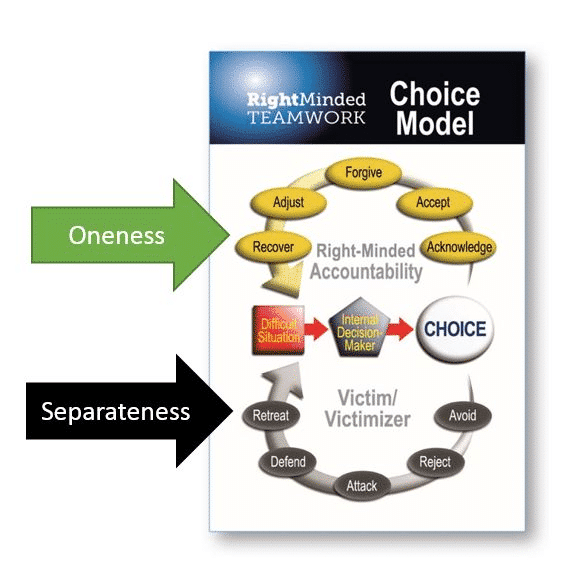
As you implement your roles and responsibilities, you need to do so while operating out of a deep-seated and heartfelt sense of Oneness with your teammates and your team’s mission.
Oneness, at the team level, means:
- Teammates believe and behave as interdependent and ONE‐minded team players.
- You believe: None of us is as smart as all of us which equates to 1 + 1 = 3.
- Teammates believe: that the whole is greater than the sum of its parts – abundance.
- You demonstrate in word and action an attitude of “We” plus you extend personal accountability.
Moreover, the opposite of ONE‐mindedness is “separatenessOneness is a psychological state of mind. It can be described in many ways using phrases such do no harm, and work as one. Separateness is its opposite. More,” and at the team level, it means:
- Teammates believe and behave as separate and independent‐minded team players.
- You believe: I am right, and you had better listen to me which equates to 1 + 1 = 1.5.
- Teammates believe there is not enough, so you fight to get what you think is rightfully yours – scarcity.
- You demonstrate an attitude of “I,” and unfortunately, you express personal victimization in words and actions.
Teams can get by while operating in an atmosphere of separateness, but they never achieve their full potential. By definition, they pull in separate directions.
Separateness hinders performance. It sets up
- destructive competition,
- encourages little or no cooperation,
- reinforces power struggles,
- feeds the feeling of helplessness, and
- justifies finger-pointing & blame.
Oneness helps performance. It creates
- cooperation,
- nurtures healthy competition, and
- empowers people to take accountability.
The costs and benefits are clear.
Which will you choose? It is far better to believe and act from Oneness.
Listen to the video above as Dan explains the importance of the attitude of teammate Oneness.
Conclusion
Defining and clarifying teammate roles and responsibilities once every six months is a practical exercise that ensures you sustain high-performance teamwork.
Are you ready to define teammate roles and responsibilities?
Here are some actions you can take right now.
Consider using the Right-Minded Choice Model in the roles and responsibility exercise because it will help you create a positive atmosphere for the workshop.
- Download this Guide and plan your team roles and responsibilities workshop.
- If you think the video would help your teammates, encourage them to watch it before the workshop.
- If you want support, contact me, Dan Hogan, and we’ll get you set up for success.
Here’s to your success in Defining Teammate Roles and Responsibilities Using These Four Questions
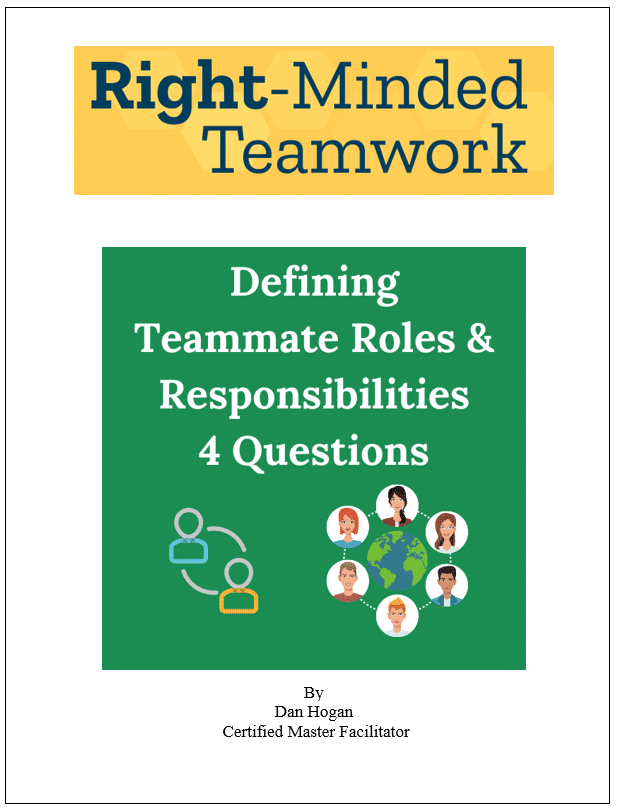
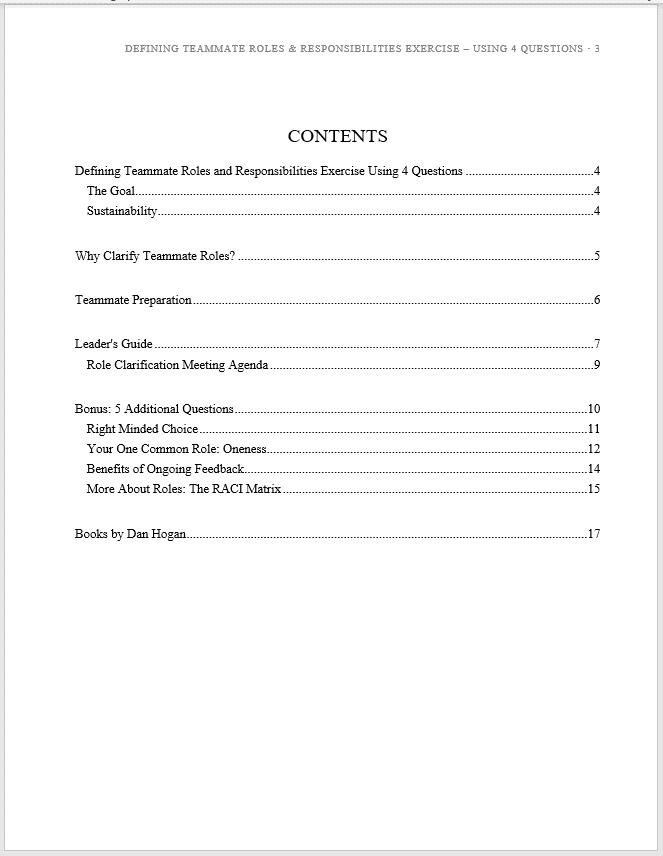
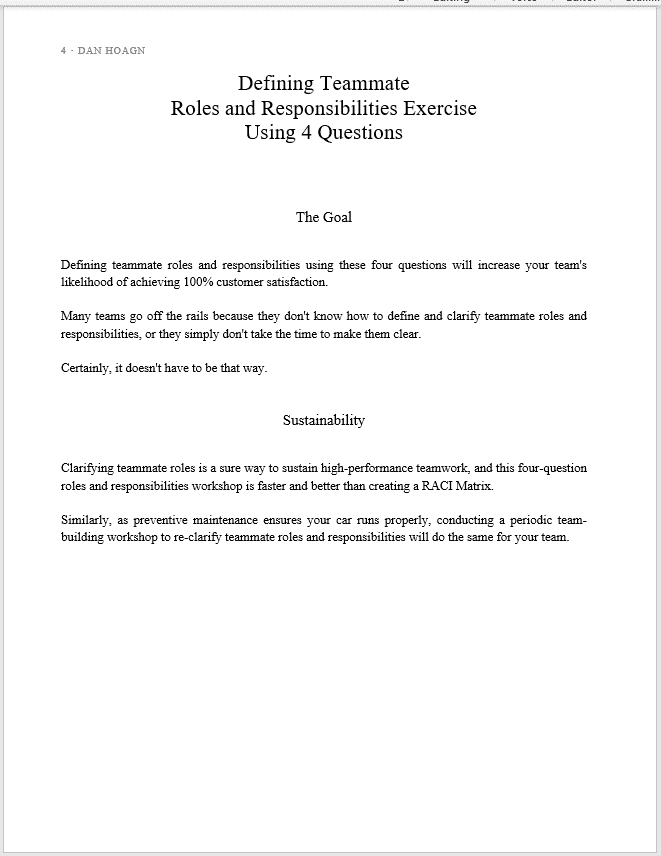
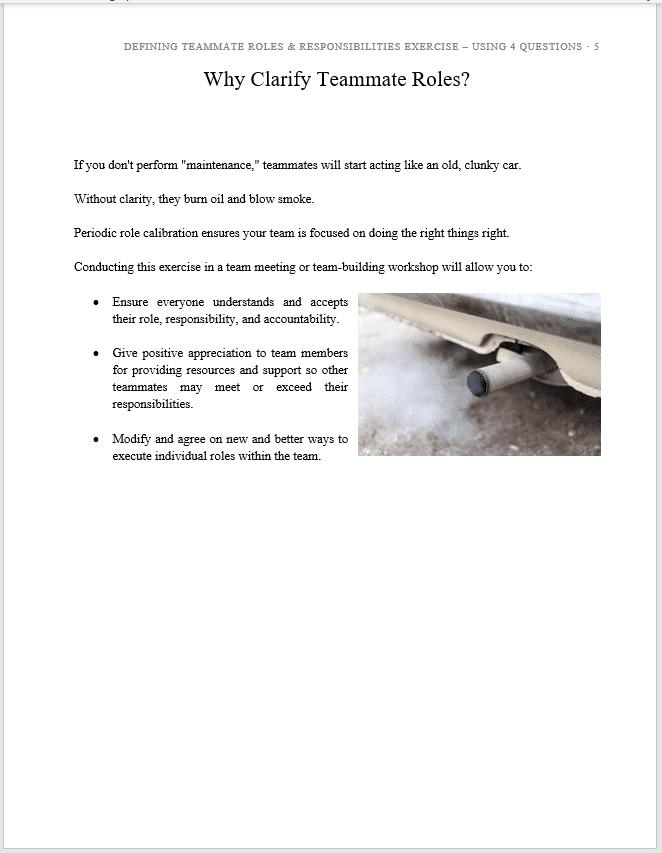
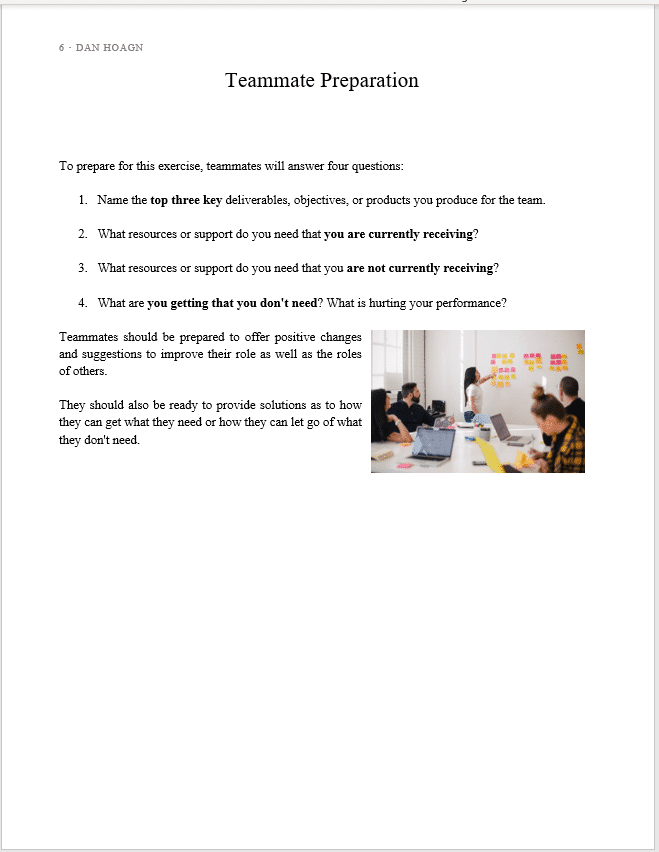
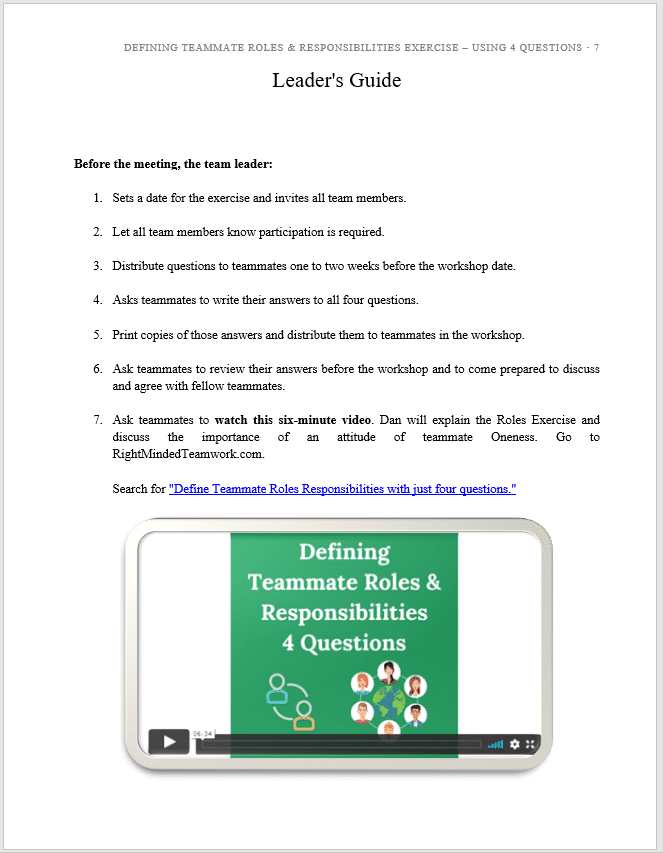

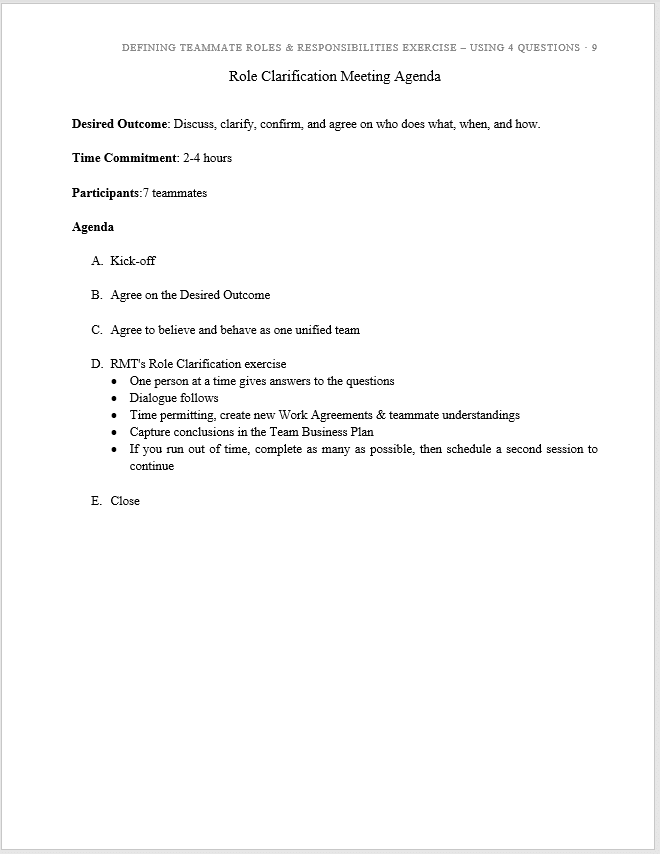

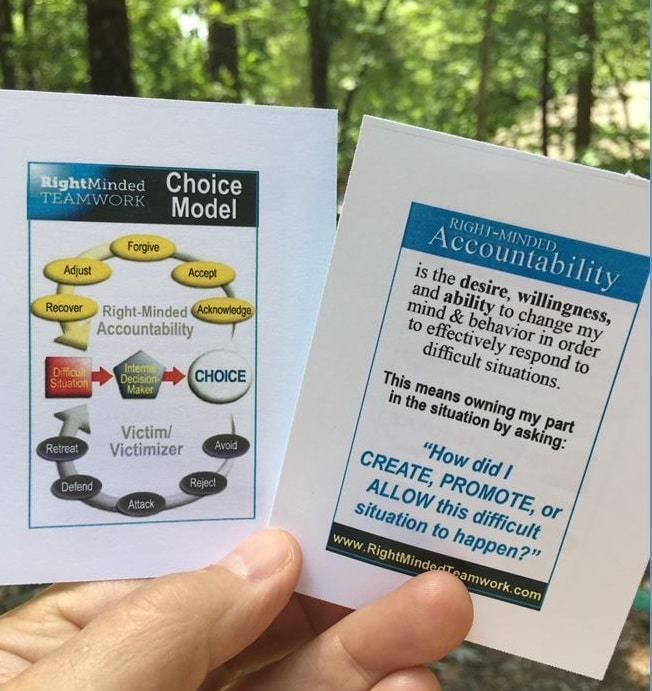

Jackie D’Elia –
Excellent product. Thank you.
Dan Hogan –
Thank you very much, Jackie.
Dan Hogan –
Hello fellow teammates! Dan Hogan here. I’m the co-creator of Right-Minded Teamwork.
I used this “Roles & Responsibility” team-building exercise hundreds of times, in various forms, over my three-decade career. It worked every time. Moreover, it strengthened every team’s ability to create and sustain Right-Minded Teamwork.
Karey Covey (verified owner) –
I used the 4 questions exercise in a team relationship building workshop. It was extremely helpful for the team to think of the opportunities framed in this way and sticking to the facts. It was a safer way to share and be courageous in conversation. Highly recommend this tool – so adaptable and easy to use. Thanks Dan!
Dan Hogan –
Thank you, Karey! It is so delightful to hear of your team’s success with this exercise. And I’m sure your expert facilitation and gentle guidance ensured it was a “safe way” for them to have their “courageous” and, I’m sure, healing conversation. Thank you for sharing and for using Right-Minded Teamwork. Dan